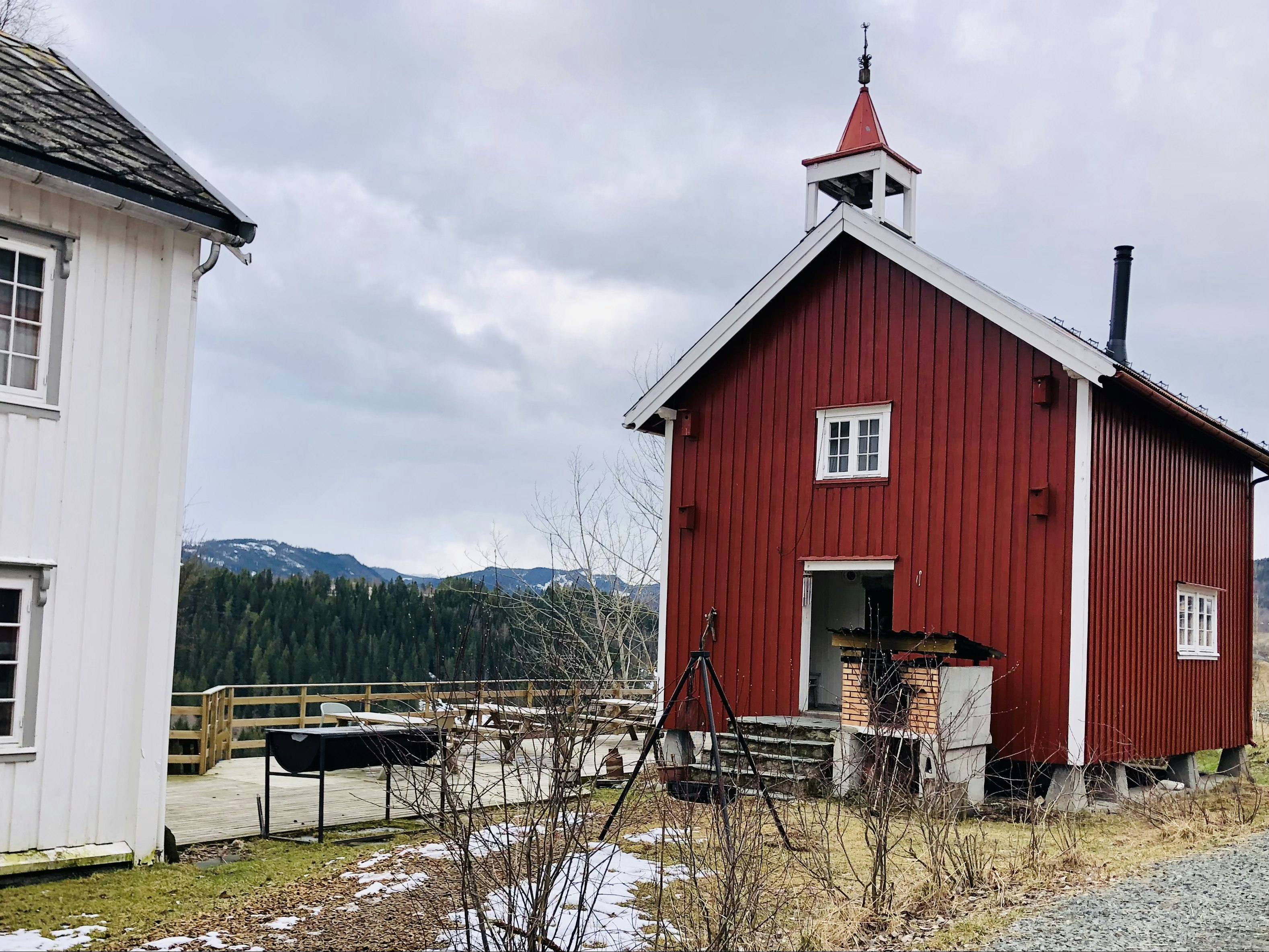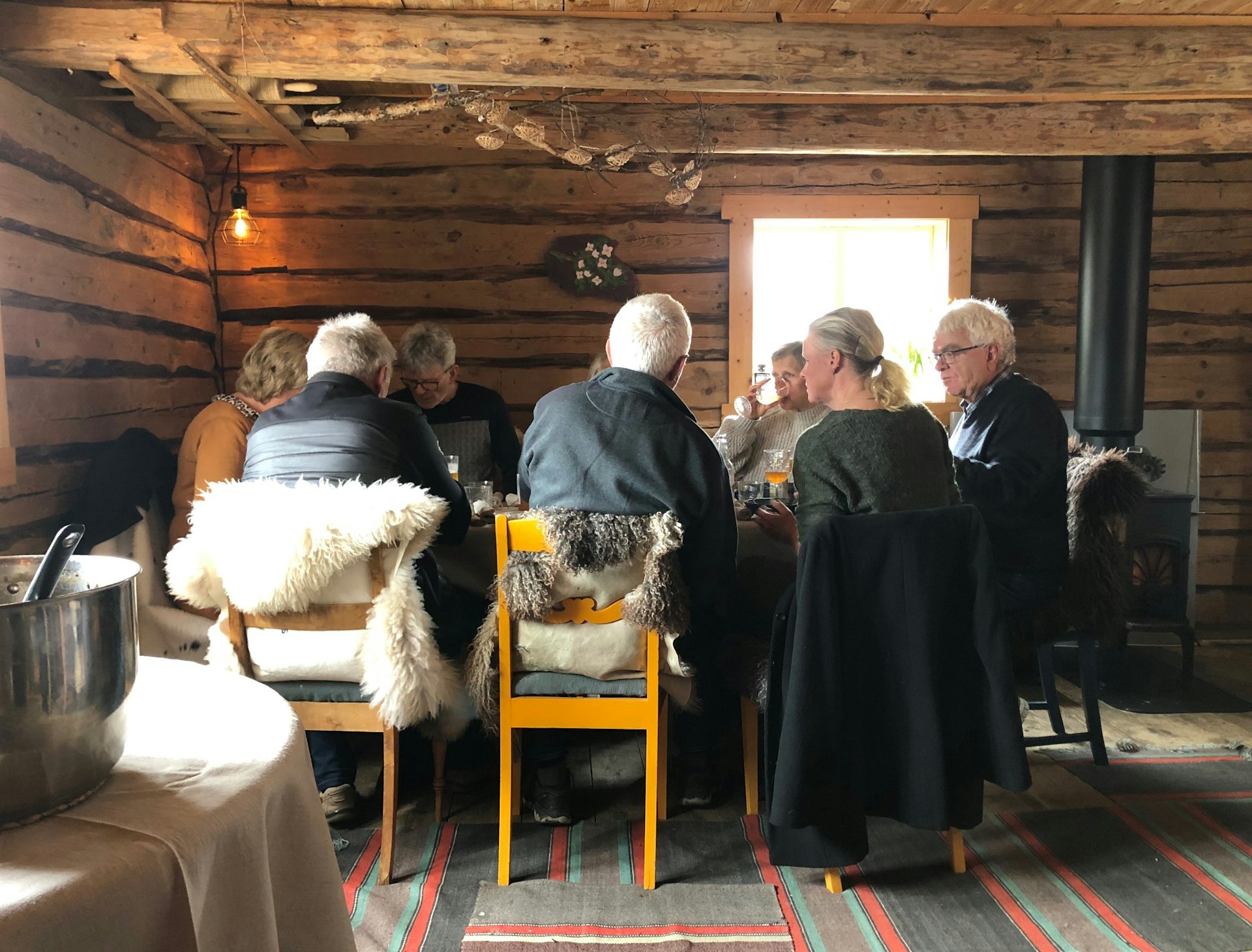France-based writer Nicola Williams is no stranger to excellent cuisine. So it was with a curious appetite that she traveled to Norway’s unlikely food capital to meet some of the women making it happen.
Urban hotels with their own 4000-tree fruit orchards. Restaurants who buy a single cow from a local farmer to hang, butcher and serve in minute portions that skillfully incorporate every nose-to-tail morsel. Food alchemists who substitute imported flavors with wild flowers, berries, mushrooms and insects (wood ants instead of lemons!) foraged in their city’s forested backyard.
Norway’s one-time Viking capital, Trondheim has long been known as the place where Nordic pilgrims worship ancient Viking relics, and kings and queens get crowned in Europe’s northernmost Gothic cathedral. These days, the city’s flourishing food scene – which is fast becoming a blueprint for sustainable dining – is the main reason to visit. Trondheim is amassing ever more gourmet credentials: the city will host the Bocuse d’Or Europe in 2024, Trondheim-Trøndelag was a European Region of Gastronomy last year and the local profusion of Michelin stars is, for a city its size, quite frankly indecent.
But to really sink your teeth into the scene, you need to venture to the source.
Unearthing new tastes
“Taste this!” Elin Östland tells me earnestly, plucking a lime-green shoot from a blackcurrant sapling and handing it to me. The flavor is eye-wateringly intense and punchy, and lingers well after we’ve walked the length of the heated greenhouse at biodynamic farm Skølberg Søndre, where 80-odd varieties of vegetables, fruit, herbs and a rainbow of delicate edible flowers grow from seed.
This small-scale farmer is the gardener for produce-driven chef Heidi Bjerkan, of Trondheim’s Credo. Accordingly, Östland can scold the Michelin-starred celebrity should she forget to water the restaurant’s own sizable kitchen garden – and share new, experimental raw tastes with her that might find their way onto Credo’s zero-waste, 20-to-25-course tasting menu, which has become an international sensation.
“Heidi comes to our farm and we walk a lot in the garden, collecting and tasting parts of the plant you wouldn’t normally taste,” Östland says. “Solomon’s seal, for example, is a woodland flower thought of as poisonous – but its spring shoots aren’t. They taste like asparagus with a hint of bitterness.
“We perceive plants as having a short life and just one taste, but neither is true,” she continues. “Take parsnips: the sweet roots are delicious – but leave them in the soil over winter and when they flower in spring, their seeds are fat, juicy, an explosion of strong citrus flavor. It’s like biting into an unpeeled orange.”
Thrilling guided-cellar tours of the farm – an hour’s drive south of Trondheim, it’s been in the family of Carl Erik, Östland’s husband, since 1860 – waltz visiting foodies through the local tradition of storing and fermenting vegetables, and conserving meat before consuming every part. As we sit down to a Saturday lunch in the chapel-like outhouse where Carl Erik’s great-grandfather stored grain, I eye up several Mangalitsa pork legs – salted for two months, air-dried for three – dangling from the wood-beamed ceiling. Carl Erik entertains with his ancient family recipe for smoked pig’s heart.
“We limit our livestock to the number our land can feed,” Östland explains. “Like this, we know the exact origin and content of everything we eat.” Milk from some of the farm’s 10 cows – a Norwegian endangered-heritage breed on Slow Food’s Ark of Taste – becomes 4kg (9lb) of butter and up to six liters of sour cream each week, all destined for Credo. Any food waste is composted and fed back into the soil. As I depart, clutching one of Östland’s sublime homemade cardamom buns and vowing to stay the night next time (the farm has four cozy B&B rooms), she raises the lid on 15 shiny white duck eggs warming in an incubator by the front door.
“About 60% will hatch – they’re Indian Runners. I’ll let them out in the garden every evening and will never have a slug problem,” she says with glee. Her ducks are undoubtedly the finest natural pesticide that passion, hard work and an unfaltering love for the land can buy.

Ost-most: reinventing food and drink pairings
Hopping between farms that display a “Host & Producer” sign is the best way to navigate the Golden Road, a food-themed driving itinerary from Trondheim that leads through apple orchards, cider distilleries, artisan-cheese dairies and farmsteads selling Aquavit infused with local caraway. At the restaurant of Inderøy’s hilltop Øyna Hotel, overlooking the Trondheim fjord and snow-capped mountains beyond, we swirl and sniff apple juice in tall-stemmed, wide-bottomed tasting glasses, as we would fine wine.
“This one lingers on the palette like honey. We can taste gooseberry, lemon, even pineapple – it’s super sweet,” the female sommelier explains, directing us to the local blue on the cheese platter paired by head chef Maren Myrvold. In an orchard down the hill, Myrvold and her husband Yngve grow seven of the 400-odd apple types found in Norway. In their farm shop, they sell their organic, cold-pressed Inderøy Mosteri juices in slim glass Bordeaux bottles, complete with a château-styled label indicating the varietal. Road-trippers can stop, talk apples and taste – or head up to the hotel-restaurant for ost-most, the local teetotaler counterpart to cheese and wine.
“We want people to regard our juices as a unique, quality produce with a home, a story – and yes, there is vintage variation too, just like wine,” Myrvold tells me as I nose an aromatic Elstar (smells like a pear!) and pop chunks of mature Gammel Eric cheese crafted by an artisan cheesemaker.
“Here in Inderøy, we have a rich ecosystem of food producers – everyone helps each other. Many friends help with our harvest in September and October” explains Myrvold. Last year, they picked 20,000 kg of apples by hand.
“Astrid Aasen at Gandstad Gårdsysteri in Inderøy was the first dairy farmer in Norway…to make cheese directly on her farm with milk from her cows. She was a pioneer – an inspiration for women and farmers.”
Why apples? “We want to use – not waste – fruit the garden gives us, and revive local history. Fifty years ago, women living in small cottages by the fjord didn’t have jobs so they grew apples, strawberries and blackcurrants to sell to a juice factory which opened in Nord-Trøndelag in 1938. These women worked hard, creatively. So why can’t we?”

Shaking up the drinks scene
Back in Trondheim, Norway’s only master tea blender is working on a cold-brew pairing menu for Sanoi, the new fusion bistro of chef Jonas Naavik (who put the city on Europe’s gastronomic map back in 2019 with Michelin-starred Fagn). Hanne Charlotte Heggberget’s Gravraak Teateliér tea atelier and boutique graces a backstreet in Bakklandet, the oldest part of Trondheim, where 18th-century wharf houses squat above the Nidelven River and locals fish for wild salmon between June and August.
“Customers always ask me: what do you recommend and what does everyone drink? But that has got nothing to do with it, because this is a sensory trip that is individual. I guide them through a journey of aromas and tastes,” explains Heggberget, passing me a tin of marigold- and rosebay willow–laced Black Viking tea to smell. Its notes are fruity, malty.
A lawyer for 18 years, Heggberget moved to her husband’s ninth-generation farm on the mountain slopes of Vassfjellet in 2016. She turned to farming as a sensory experience for her husband after he became blind, and today blends Norwegian flowers, herbs, heathers and berries – many foraged and farmed around Trondheim – with rare grand-cru teas bought directly from tea farmers around the world.
“I became a farmer overnight. I started taking walks with my husband and he could smell the wild herbs, so I began growing them,” she says.
“I get up early and work my way up the mountain each morning collecting different things – herbs, birch leaves, which are sweet as they start to spring out…I sleep in winter!” she adds, laughing. “Passion – not money” is her immediate reply when I ask what drives Norway’s strong tradition of female entrepreneurship.
My final stop is Britannia Bar, inside the landmark Trondheim hotel where English aristocrats, anglers and afternoon-tea lovers hobnobbed in the 19th century. Swashbuckling stories from local history fuel the signature cocktails here. The feminine inspiration for the elegant, spicy “Journey” cocktail comes as no surprise: Trondheim’s bold, wildly successful businesswoman Catharina Lysholm (1744–1815). In 1805, this pioneer dared to send her merchant ship loaded with aquavit across the equator to create distinct new flavors in the form of Linie Aquavit: potato-distilled liquor ingeniously matured in sherry-oak casks for four months at sea.

How to make it happen
Norwegian operates direct flights up to five times weekly from London Gatwick and Manchester to Trondheim from around $110 round-trip.
Female-led B-corp Up Norway connects travelers with local producers, creatives and green thinkers on tailor-made, regenerative journeys throughout Norway. Maximum-exploration, minimum-impact, five-day trips start at $3235 per person, including accommodation, meals, activities, transport and a super-nifty digital-itinerary app complete with chat support.
Nicola Williams traveled to Norway as a guest of Norwegian Air Shuttle, Up Norway, Explore Trøndelag, Visit Northwest, Moloen at Veiholmen, Øyna Kulturlandskapshotell and the Britannia Hotel.
